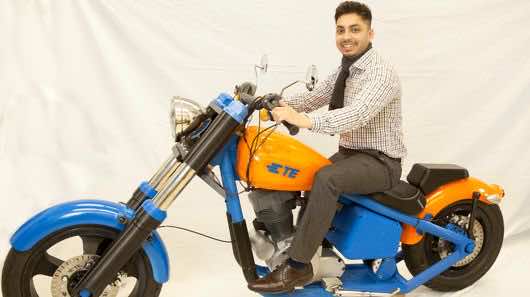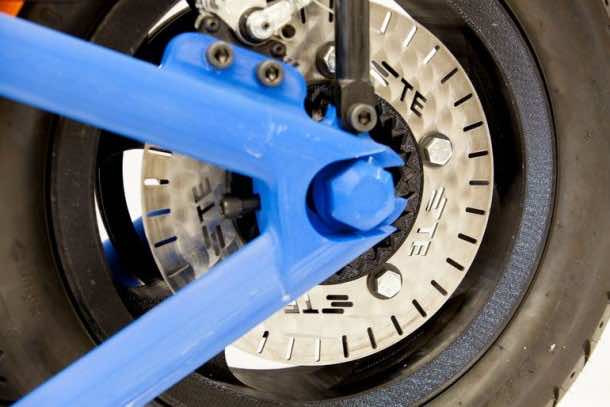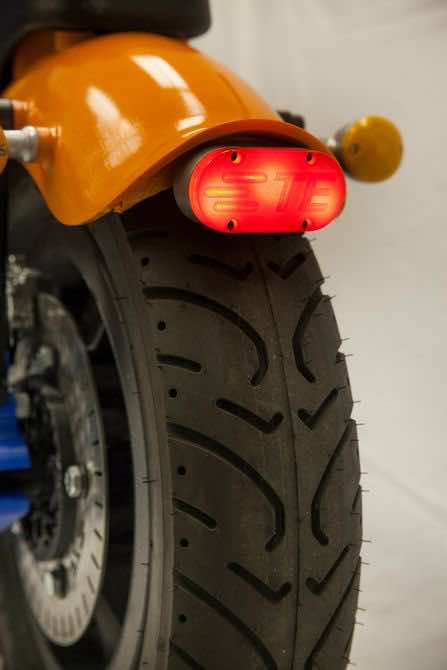So, apparently you won’t be needing long production lines for motorcycles anymore as this 3-D printed bike speaks for itself. The bike was completely designed on CAD, and then the parts were printed in plastic using 3D printing techniques. Finally, the parts were assembled, and the bike was taken out for a spin. No special production lines and machines needed at all!
Although the bike might not be ready to hit the highways as of yet, it provides an alternative manufacturing process that can make the bike highly customizable. Since even the load bearing items like wheels and bearings have been manufactured by 3-D printing techniques, the parent company TE Connectivity’s attempt to make these parts have been successful.
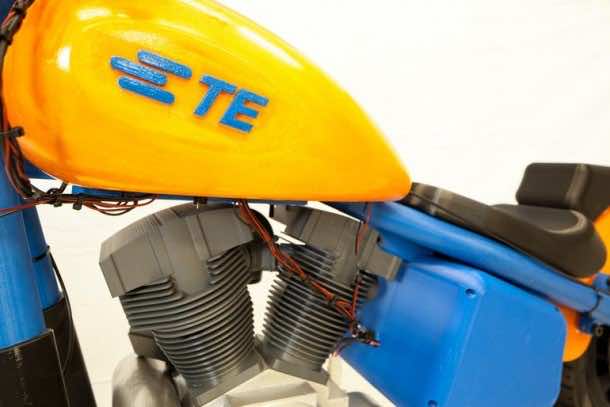
The bike’s design has been inspired by Harley-Davidson Softail version. The length is 8-feet, and the weight is 250 pounds, and it can support a significant load up to 400 pounds. The frame has been designed with the help of a successful trial and error process. A major part of the bike was 3D printed by the company itself, but some obvious parts were outsourced like the braking system, electrical wiring, battery and some standard bolts.
The fully functioning status of the bike is the highlight of this news as there have been particular design problems associated with the manufacturing 3D body of the motorcycle. The motor is a miniscule one horsepower (750 W). The battery can power a 15mph ride for quite a few minutes. The range and battery power aren’t up for debate, as the company has come up with a working 3D printed motorcycle within a 25,000$ budget. The range and speed will only increase with time.
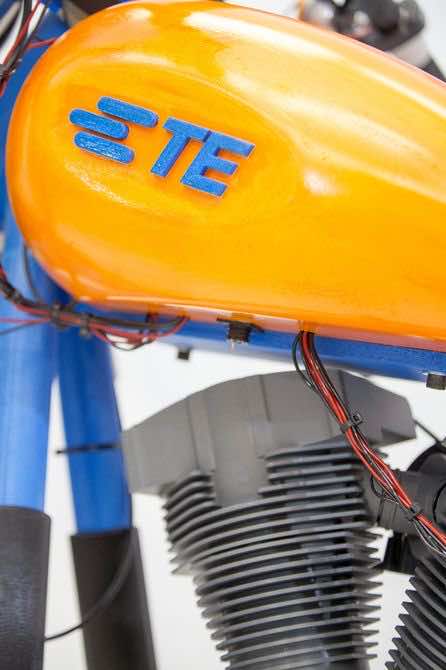
The main load bearing parts were developed by a 3D printed technology called Fused Deposition Modeling (FDM). The material used for the 3D printing technique is a complex polymer named ABS that has the required properties of strength. Heat resistant resin Ultem 9085 has been used to make some of the most complex geometries like the body itself. Wheel bearings may sound tricky to make especially the rear one. Equally difficult was fabricating the wheel rims that have to support real inflatable tires. The headlight housing were manufactured through another 3D rapid prototyping technique Direct Metal Laser Sintering (DMLS).
It was a second attempt by the TE Connectivity to make a 3D bike. The previous one got damaged during transportation, and the designers used this as an opportunity to improve the bike further. The 3D printers were provided by Stratasys, and their machines had to work overtime to complete the bikes on time. They are currently advising many other companies like Ducati on the 3D technology, and they intend to introduce FDM at industrial level anytime soon. The 3D printing technology is really starting to take on conventional manufacturing as it has progressed by leaps and bounds. Only a few years earlier, it was just thought as a hobby to make useless plastics. Now it is finding applications from rocket manufacturing to 3D printing of human organs itself!

